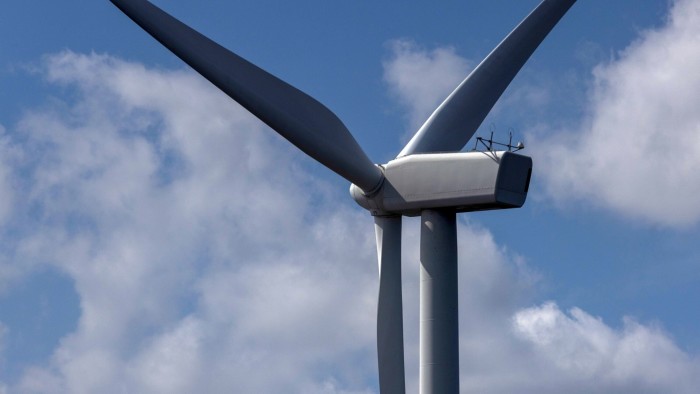Stay informed with free updates
Simply sign up to the Renewable energy myFT Digest — delivered directly to your inbox.
The chief executive of GE Vernova, the world’s third largest wind turbine manufacturer by market share outside of China, has said he will keep his search for new offshore turbine orders on ice as he waits for market conditions to improve.
Scott Strazik wants a better economic environment following a difficult period for the offshore wind industry, which has struggled with supply chain strains and rising interest rates.
Donald Trump’s re-election has added uncertainty to the sector after his pledge to stop the offshore wind industry in the US on “day one” of his presidency. He also said he will halt tax credits for green energy under the Inflation Reduction Act.
GE Vernova’s approach to focus on existing offshore turbine projects, which includes supplying the UK’s Dogger Bank Wind Farm in the North Sea, well predates the election and is not connected to Trump’s victory, however.
Strazik hopes over the next two years “the market will create economic incentives and opportunities for us to do business that [are] drastically different economic terms than the economics we’re executing on today.
“If that presents itself, we’re going to work hard to serve that market. But it’s not a market opportunity that we see in front of us right now.”
He said the company’s offshore wind turbine unit has a $3bn backlog of orders that would take about two years to complete. It has not added to the backlog for almost three years.
“We still look at the pricing environment and, relative to being focused on adding to the backlog today, we’re much more focused on executing and serving our existing customers as well as we possibly can,” Strazik said,
The boss of the US energy equipment manufacturer, who spoke to the Financial Times on Thursday, described offshore wind projects as “exponentially more complicated” than onshore.
His comments show the strains in the offshore wind sector, which has an important role in meeting decarbonisation targets in many countries including in the US and Europe.
Offshore wind is complicated owing to the typically larger size of the turbines and challenges of installing and maintaining them at sea.
Developers have also suffered from high interest rates and supply chain strains over the past few years, while wind turbine manufacturers’ profits have been squeezed as companies race to develop larger models.
Wind farm developers have pushed for larger turbines in the hope of getting more electricity out of each one. However, this has also pushed up costs for turbine manufacturers and other parts of the supply chain.
The German government had to help Siemens Energy last November with state guarantees on an €11bn bank credit line as losses widened at its wind turbine unit Siemens Gamesa due to high costs and challenges scaling up.
GE Vernova and others have been trying to standardise their turbines to improve quality and bring costs down, but in September it announced plans to trim the offshore wind unit with potential cuts of about 900 jobs.
Strazik said a lot would likely change in the industry over the next two years, pointing to the potential for higher electricity prices or more industry standardisation that could help manufacturers reduce costs.
Turning to politics, Strazik indicated that both Republicans and Democrats in the US recognise the importance of clean energy industries.
“It’s very clear these investments are creating jobs . . . new manufacturing capacity, exports, US competitiveness and, frankly, US national security interests are protected with these investments,” he said.
GE Vernova was spun out of General Electric in April, with more than 80,000 employees around the world making and servicing gas turbines, wind turbines and electricity equipment such as transformers.
It reported $317mn in losses on an EBITDA basis for its wind turbine unit in the third quarter, saying that higher onshore wind margins were “more than offset by additional offshore wind losses”. It expects the wind unit to be “modestly profitable” this year.


